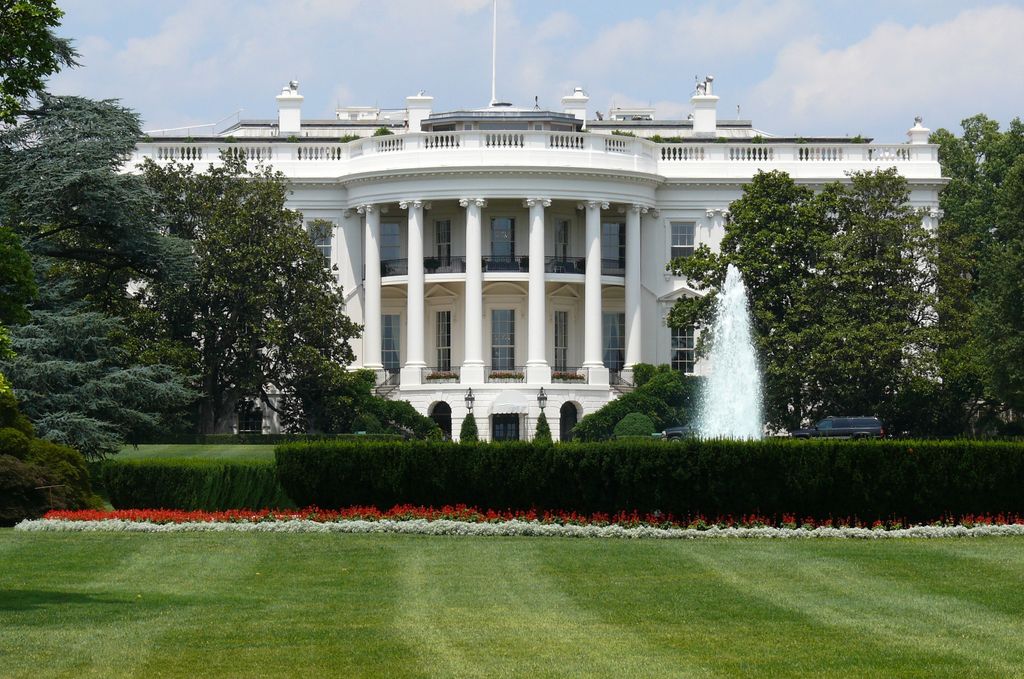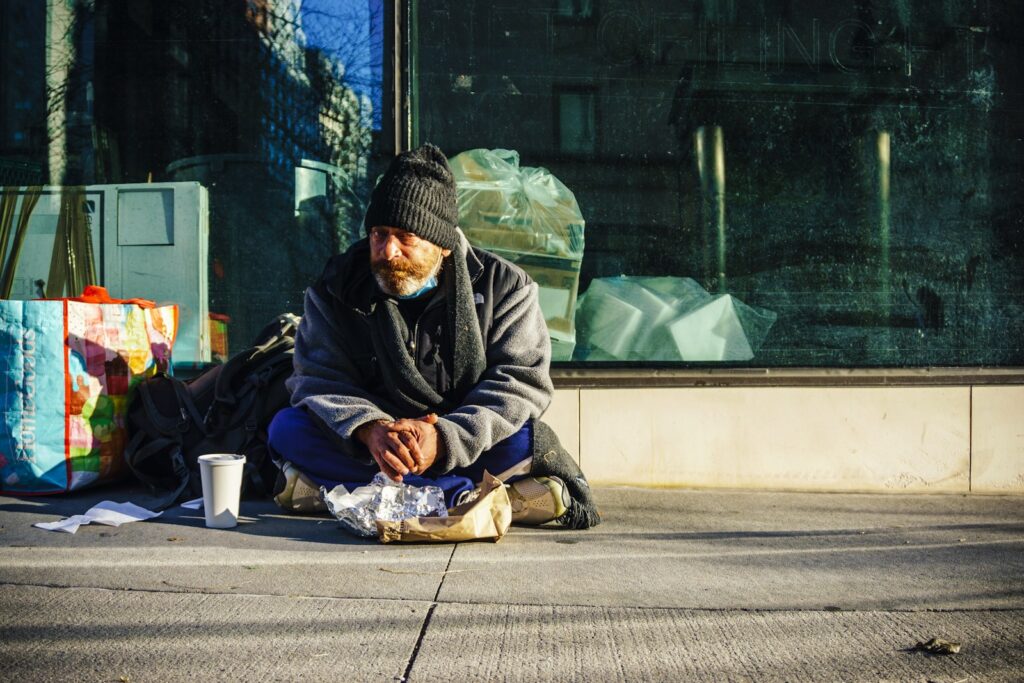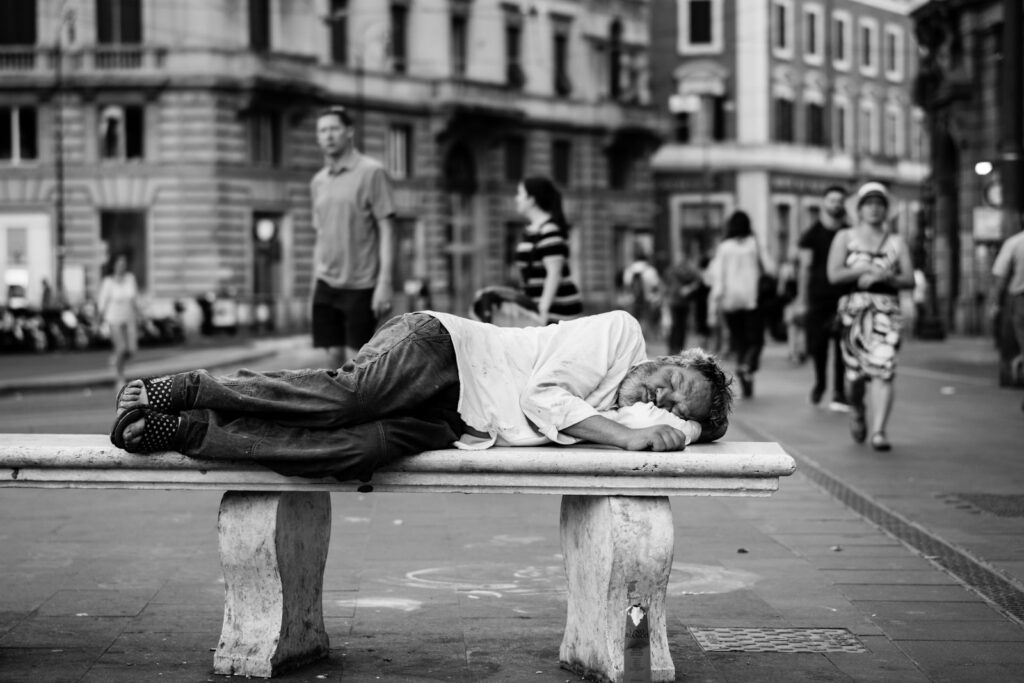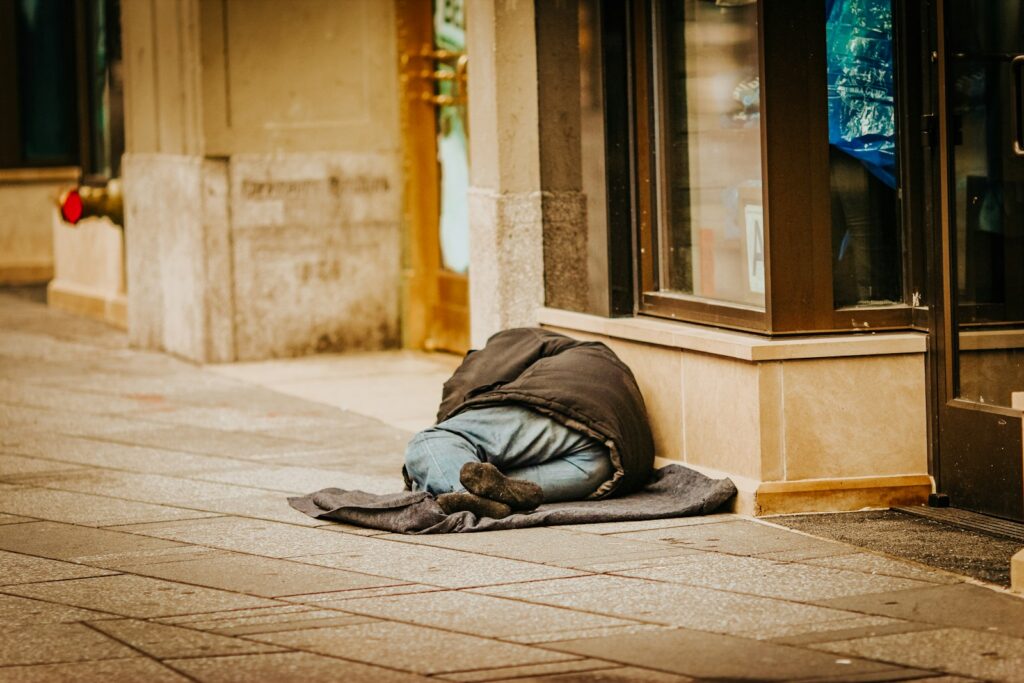The landscape of homelessness policy in the United States is undergoing a marked transformation following a recent executive directive from President Donald Trump’s administration. On July 24, President Trump signed an executive order titled “Ending Crime and Disorder on America’s Streets,” which outlines a significant shift in the way federal, state, and local authorities are encouraged to respond to the growing visibility of homelessness. The directive has triggered immediate national debate, attracting strong support from advocates of public order and sharp criticism from civil rights and homelessness advocacy groups, who warn of potentially harmful impacts on vulnerable populations.
The administration frames the executive order as a bold step to enhance public safety while ensuring individuals facing addiction and mental health challenges receive appropriate intervention. This new federal initiative seeks to streamline the process for municipalities to clear homeless encampments from public spaces such as sidewalks, parks, and transit areas. Supporters contend that these actions are critical to restoring a sense of security and cleanliness in urban environments, consistent with a broader agenda to “Make America Safe Again.”
This introductory section will examine the key provisions of the executive order, offering a detailed analysis of its core directives and the policy instruments it activates. It will also explore the administration’s stated rationale, contextualizing the order within recent legal developments, including the U.S. Supreme Court’s ruling on bans against public sleeping. Furthermore, the section will highlight changes to federal funding priorities and housing assistance programs. Understanding these foundational elements provides essential insight into the scope, objectives, and potential impact of this federal policy shift on homelessness in the United States.
Legal Reversal and Institutional Intervention in Homelessness Policy
On July 24, President Donald Trump enacted an executive order that redefines the federal government’s approach to homelessness by prioritizing the removal of unhoused individuals from public spaces. Titled “Ending Crime and Disorder on America’s Streets,” the order outlines several key directives designed to grant state and local authorities broader enforcement capabilities. A central provision instructs Attorney General Pam Bondi to seek the reversal of existing federal and state judicial precedents and to terminate consent decrees that have historically limited government action against homeless encampments.
These legal constraints have played a significant role in protecting unhoused individuals from forced displacement without due process or access to alternative accommodations. The order aims to eliminate these safeguards, thereby facilitating the transfer of homeless individuals into treatment facilities or long-term institutional care. The text states, “Shifting homeless individuals into long-term institutional settings for humane treatment through the appropriate use of civil commitment will restore public order.”
The executive order further asserts that, “Surrendering our cities and citizens to disorder and fear is neither compassionate to the homeless nor other citizens.” This framing reflects a policy philosophy that equates visible homelessness with public disorder and views involuntary relocation and treatment as both necessary and humane. The directive signals a pronounced shift in federal priorities, placing emphasis on institutional intervention and public order, even as it reduces the legal protections that have long defined the rights of unhoused individuals.

Federal Funding Realignment: Incentivizing Local Enforcement Through Strategic Grants
A central mechanism embedded within the executive order is the redirection of federal funds and the introduction of new criteria for grant allocation. The order mandates that federal resources be restructured to ensure that individuals removed from public spaces are transferred into rehabilitation, treatment programs, or other designated facilities. Although the order does not specify exact financial figures or allocation schedules, it clearly signals a shift in priorities toward institutional and treatment-based responses to homelessness.
The executive order also establishes a coordinated framework involving Attorney General Pam Bondi and the secretaries of Health and Human Services, Housing and Urban Development, and Transportation. These officials are directed to prioritize federal grants for jurisdictions that enforce specific prohibitions. These include public drug use, urban camping, loitering, and squatting, as well as requirements related to the monitoring of registered sex offenders.
This funding approach functions as a powerful incentive for local governments. By linking federal financial support to the enforcement of public order measures, the administration seeks to influence local and state policy direction. The strategy reflects a broader preference for enforcement-led solutions, using federal financial leverage to encourage compliance with the order’s goals and reshape local approaches to homelessness management.

Framing Enforcement as Compassion: The Trump Administration’s Dual Justification for its Homelessness Policy
The Trump administration has consistently presented its executive order as a decisive and necessary response to multifaceted societal challenges, emphasizing the dual objectives of enhancing public safety and extending care to vulnerable populations. In a statement to USA TODAY, White House Press Secretary Karoline Leavitt reinforced this position, stating that President Trump is “delivering on his commitment to Make America Safe Again and end homelessness across America.” This characterization positions the directive as both a fulfillment of campaign promises and a component of a broader national strategy linking security with social welfare.
Leavitt elaborated further, asserting that “By removing vagrant criminals from our streets and redirecting resources toward substance abuse programs, the Trump Administration will ensure that Americans feel safe in their own communities and that individuals suffering from addiction or mental health struggles are able to get the help they need.” This statement reflects a dual rationale: addressing perceived threats to public safety by removing individuals labeled as “vagrant criminals,” while simultaneously promoting access to treatment for addiction and mental health conditions.
The language employed by the administration frames visible homelessness as inherently associated with criminality and disorder. The proposed solution—mandatory removal followed by institutional treatment—is presented as both humane and effective. This perspective highlights the administration’s belief in a proactive, enforcement-driven approach to addressing the interrelated crises of homelessness, public safety, and behavioral health. It suggests that both unhoused individuals and the broader public will benefit from this strategy, which prioritizes visible order and institutional intervention over housing-first or rights-based models.

Legal Foundations for Enforcement: Supreme Court Ruling Reinforces Executive Action on Homelessness
President Trump’s executive order on homelessness emerges within a broader legal framework shaped by a pivotal Supreme Court decision issued in June. This ruling directly redefines the legal parameters surrounding public homelessness, affirming that individuals without shelter may be arrested and fined for sleeping in public spaces. The decision effectively reversed a previous lower court ruling that had deemed such enforcement measures unconstitutional when adequate shelter was unavailable, characterizing them as cruel and unusual punishment.
The 6–3 decision, which reflected the court’s ideological divide, upheld an ordinance enacted in Grants Pass, Oregon, a city of 38,000 residents in southern Oregon. Under this ordinance, unhoused individuals who sleep outdoors face fines of $250 for initial violations and potential jail time for repeat offenses. The ruling significantly bolsters the authority of municipalities to enforce public camping bans and similar regulations.
Reports indicate that this judicial precedent has already influenced municipal policy across more than two dozen states, encouraging local governments to adopt stricter penalties targeting unsheltered individuals. This changing legal environment aligns with the enforcement measures encouraged by the Trump administration’s executive order. By building upon this ruling, the order reinforces and expands the capacity of local governments to pursue punitive responses to homelessness, marking a coordinated federal and judicial shift toward a more enforcement-oriented national policy.

From Rhetoric to Policy: Trump’s Longstanding Pledge on Homelessness Enforcement
President Trump’s executive order on homelessness reflects a consistent pattern in his political rhetoric and campaign commitments concerning urban governance and the visibility of homeless encampments. Throughout his tenure in public life, he has repeatedly voiced dissatisfaction with the proliferation of homeless camps, framing their removal from public spaces as a policy priority. This concern has been particularly pronounced in Washington D.C., where encampments on federal land near the White House and State Department have drawn his explicit attention.
His engagement with the issue extends beyond the current executive order. In March, President Trump signed a separate directive instructing the National Park Service to clear all homeless encampments located on federal lands. This earlier action demonstrated his willingness to mobilize federal agencies to address the matter directly. Further reinforcing this stance, a 2023 campaign video featured Trump stating, “When I am back in the White House, we will use every tool, lever, and authority to get the homeless off our streets. We want to take care of them, but they have to be off our streets.”
This repeated emphasis on removal, coupled with declarations of care, underscores the administration’s core policy philosophy: that addressing homelessness requires both visibility reduction and institutional management. Trump’s direct appeal to Washington D.C. Mayor Muriel Bowser to “clean up all of the unsightly homeless encampments,” along with his warning that federal intervention would follow if she proved “not capable of doing so,” further exemplifies his longstanding position. The current executive order is thus not an isolated directive but the culmination of a sustained political agenda and campaign promise focused on reshaping public space through enforcement-driven responses to homelessness.

Grant Restrictions and Housing Directives Reflect Ideological Shift in Homelessness Policy
In addition to broad directives on enforcement and treatment, President Trump’s executive order introduces specific regulations concerning the allocation of federal grants and the structure of housing assistance programs. One key provision explicitly prohibits the use of discretionary federal funds for drug injection sites or any activities that facilitate illicit drug use. This clause signals a firm policy stance against harm-reduction models that, according to critics, may be perceived as enabling illegal behavior.
This position contrasts with perspectives supported by many public health experts who advocate for supervised injection sites as effective tools to reduce disease transmission and overdose fatalities. By rejecting these programs, the executive order reinforces a preference for abstinence-based or enforcement-oriented approaches to substance use, steering federal resources away from risk mitigation strategies and toward models that emphasize treatment compliance and public order.
The order also addresses housing-related safeguards for vulnerable populations. It prohibits placing convicted sex offenders who are receiving homelessness assistance in housing where children are present. This provision is framed as a measure to enhance safety within federally supported housing environments, particularly for minors. Furthermore, the order calls for the creation and prioritization of programs that provide housing exclusively for women and children, emphasizing gender and age-specific protection in shelter distribution.
These detailed restrictions and programmatic directives underscore the administration’s intention to shape not only the visible aspects of homelessness but also the operational standards within federal assistance programs. The order reflects a broader ideological shift that favors structured oversight, punitive restrictions, and clearly delineated demographic targeting within homelessness and substance abuse policy frameworks.

Advocacy Groups Condemn Trump’s Executive Order as Harmful and Counterproductive
President Trump’s executive order has elicited strong opposition from leading advocacy and civil rights organizations. Entities such as the National Homelessness Law Center and the American Civil Liberties Union (ACLU) have criticized the directive as “misguided at best, and counterproductive and dangerous at worst.” These groups express profound concern that the order will worsen the homelessness crisis rather than offer meaningful solutions.
Jesse Rabinowitz of the National Homelessness Law Center emphasized that “the safest communities are those with the most housing and resources, not those that make it a crime to be poor or sick.” This statement challenges the administration’s punitive framing by arguing that investment in affordable housing and supportive services offers more humane and effective outcomes. The ACLU further condemned the order for “targeting disabled and unhoused people,” drawing attention to the particular vulnerabilities within the homeless population that the policy may exacerbate.
Critics maintain that the executive order’s focus on removal and criminalization neglects the systemic causes of homelessness. Rather than providing essential support, the order risks pushing vulnerable individuals into even more precarious circumstances. The strong opposition from these organizations highlights a fundamental disagreement regarding ethical and effective approaches to addressing the complex challenges posed by homelessness in the United States.

Criticism of Forced Treatment and the Criminalization of Homelessness
A major point of controversy surrounding President Trump’s executive order is its endorsement of forced treatment and the implicit criminalization of homelessness. The order’s aim to “shift homeless individuals into long-term institutional settings for humane treatment through the appropriate use of civil commitment” has provoked strong opposition from mental health experts and civil rights advocates. Scout Katovich, a senior staff attorney at the American Civil Liberties Union, stated unequivocally, “Pushing people into locked institutions and forcing treatment will not solve homelessness or support people with disabilities. The opposite is true—institutions are dangerous and deadly, and forced treatment is ineffective.”
This viewpoint is supported by Jesse Rabinowitz, a licensed mental health professional, who affirmed that “forced treatment is unethical, ineffective, and illegal.” Critics argue that effective support for individuals struggling with addiction or mental health conditions requires voluntary, community-based treatment combined with stable housing and healthcare access. They contend that the executive order diverts public funds from proven, effective solutions toward punitive models that historically fail to address the root causes of mental illness and substance abuse.
The order’s provisions, which facilitate city ordinances banning “urban camping and loitering” and impose harsher penalties, are viewed as criminalizing poverty and mental illness rather than offering compassionate responses. Critics emphasize that such measures do not reduce housing costs or help individuals achieve self-sufficiency; instead, they hinder local efforts to resolve homelessness. There is concern that individuals without alternatives will face arrest or forced institutionalization rather than receiving the stable housing and voluntary support services that have demonstrated greater success in improving outcomes for unhoused populations.

Reversing Course: The Executive Order’s Departure from the ‘Housing First’ Approach
President Trump’s executive order marks a pronounced ideological shift away from the widely endorsed ‘Housing First’ philosophy that has guided bipartisan homelessness policy for the past two decades. The ‘Housing First’ model prioritizes securing permanent housing for unhoused individuals before addressing challenges such as mental health or substance use, based on the understanding that stable housing is foundational to effective treatment and recovery. In contrast, the executive order emphasizes funding for programs that mandate ‘sobriety and treatment’ and favors municipalities that enforce bans on homeless encampments, thereby reversing the established strategy.
The order explicitly aims to terminate support for “Housing First policies that do not promote treatment, recovery, and self-sufficiency,” reflecting a conservative critique that such policies have failed to adequately address rising homelessness. Devon Kurtz of the Cicero Institute, a conservative lobbying group involved in shaping aspects of the order, argued that the ‘Housing First’ approach “exacerbated homelessness by neglecting those in need of treatment.” This shift embodies the belief that treatment should either precede or coincide with housing, rather than housing serving as the initial step toward stability.
This philosophical realignment carries significant consequences for federal funding distribution and the operation of local homelessness programs. It effectively dismantles previous coordination efforts, exemplified by the earlier dissolution of the U.S. Interagency Council on Homelessness, a small agency responsible for overseeing homeless policy and a proponent of ‘Housing First.’ Critics, including Ann Oliva, CEO of the National Alliance to End Homelessness, caution against reverting to punitive frameworks from previous decades that have historically worsened conditions for unhoused populations.

Rising Homelessness in America: A Complex Crisis Demanding Comprehensive Solutions
President Trump’s executive order is being implemented amid a national homelessness crisis that has reached unprecedented levels. A January 2024 report from the U.S. Department of Housing and Urban Development (HUD) estimated that 771,480 people experienced homelessness on a single night, marking the highest figure ever recorded. This represents an 18.1 percent increase from the previous year’s count of approximately 650,000 individuals. More than one-third of those affected were unsheltered, living on streets, in vehicles, or in tents.
Experts attribute this surge to a complex interplay of systemic factors rather than individual circumstances alone. Primary contributors include soaring housing costs, a persistent shortage of affordable housing units, stagnant wages, and inadequate mental health infrastructure. Decades of underinvestment in social safety nets and the closure of psychiatric institutions without sufficient community-based alternatives further exacerbate the crisis. These entrenched issues create conditions where increasing numbers of individuals and families face housing instability and homelessness.
The rising figures underscore the scale of the challenge and prompt critical reflection on the effectiveness of enforcement-driven policies that fail to address root causes. Ann Oliva of the National Alliance to End Homelessness emphasized that no quick fixes exist and that permanent housing combined with voluntary supportive services remains the most effective solution. The dramatic escalation in homelessness highlights the urgency and complexity of the crisis, indicating that lasting progress requires policies tackling underlying economic and social determinants.

Despite the comprehensive scope of President Trump’s executive order, significant uncertainties persist regarding its practical implementation and long-term consequences. Media reports have raised questions about whether the Attorney General possesses the legal authority to unilaterally overturn judicial rulings or consent decrees, which form a crucial part of the order’s core mandates. This legal ambiguity may result in challenges and delays, potentially constraining the policy’s effectiveness.
The order also lacks clarity on how treatment capacity will be expanded to accommodate the large number of individuals expected to enter institutional care. Critics argue that without a detailed plan to develop sufficient and appropriate treatment facilities, the policy risks overwhelming existing systems or increasing reliance on carceral environments instead of therapeutic settings. Ambiguity around funding and infrastructure for these new initiatives presents a significant practical obstacle to achieving the order’s objectives.
Experts warn the executive order could exert a chilling effect on local homelessness policies by incentivizing municipalities to prioritize the clearance of homeless encampments as a condition for receiving federal funding. This shift from supportive housing models toward more punitive and enforcement-centered strategies is likely to influence policy debates in the coming years. The order’s actual effectiveness in reducing homelessness and aiding vulnerable populations remains a topic of vigorous debate and scrutiny.
As the executive order takes effect, its impact on America’s unhoused communities and urban landscapes will attract close examination. The divergent approaches—from affirming housing as a fundamental right to emphasizing public order through enforced interventions—reflect a profound division in national attitudes toward addressing homelessness. The future trajectory will depend on how these policies are implemented, the ensuing legal challenges, and whether they ultimately deliver meaningful progress in securing dignity and stability for all Americans.





